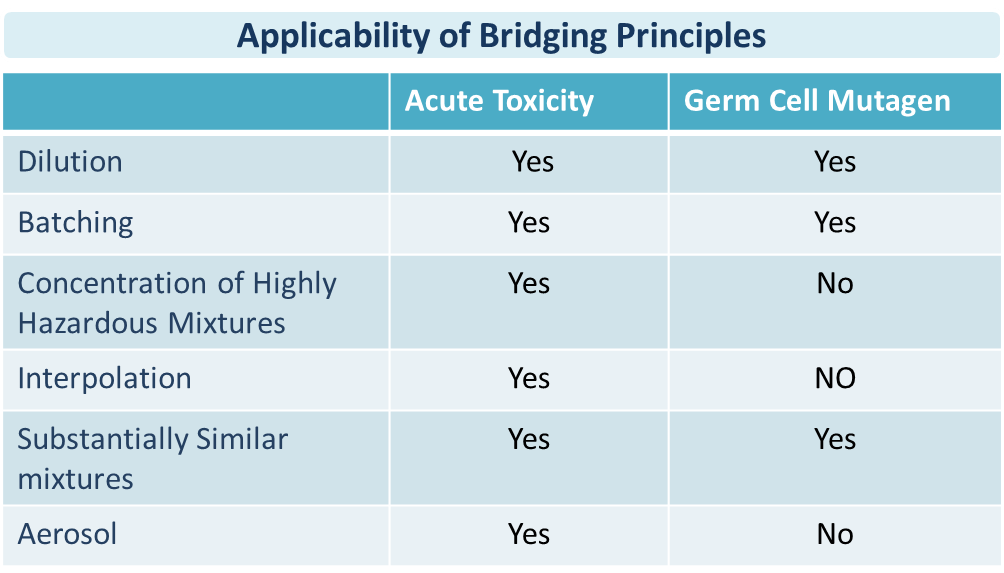GHS Bridging Principles
Little Pro on 2016-01-06
GHS bridging principles are basic principles used to classify un-tested mixtures under GHS. There are 6 GHS bridging principles and they are listed as follows:
- Dilution: Tested mixture A is diluted with less or equally hazardous ingredient B. A+B=A;
- Batching: Mixture A & B are two batches produced under same conditions. A=B;
- Concentration of highly hazardous mixtures: Mixture A is classified at its highest hazard category, for example, acute toxicity category 1. B is more concentrated than A. B=A;
- Interpolation:Mixture A and B share the same hazardous ingredient and classification. If the concentration of the hazardous ingredient in mixture C is in-between, C=A=B;
- Substantially similar mixtures:For two mixtures A+B and C+B, if A is similar to C in concentration & hazard data and B's concentration is similar in two mixtures, A+B=C+B;
- Aerosol:A mixture in aerosol form is considered to have the same classification as the non-aerosolised form of a mixture provided that the propellant does not affect the hazards of the mixture.
Applicability of GHS Bridging Principles
It shall be noted that not all 6 GHS bridging principles above apply to every health hazard. You need to consult detailed GHS classification criteria for each health hazard first. The picture below compares which bridging principles apply to acute toxicity and germ cell mutagens.

Having Questions?
We do not provide consultancy services. If you have questions or need any help, please contact our sponsor. You may also find an expert in CSP business directory below. If you are a consultant, you may get yourself listed in CSP business directory (free) or sponsor this page to leave your contact info on this page..

Tags: Topics - GHS, GHS Basics and Tutorials